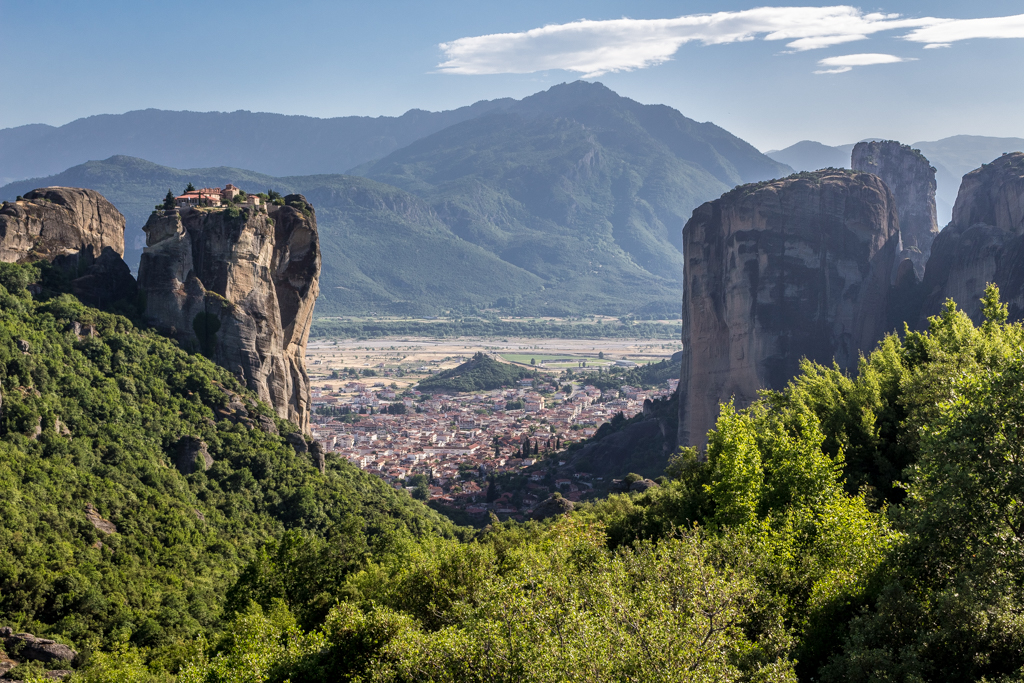Like so many other European destinations I visited this summer, the ancient monasteries of Meteora, Greece left me, er, speechless.
For someone as long-winded as myself, for a destination to render me incapable of articulating my thoughts is no easy feat. The others that have managed to do so this year? Barcelona’s Sagrada Familia, the Greek island of Santorini, or the mesmerizing sunsets of Lake Ohrid, Macedonia, to name a few.
But this time, lack of verbosity aside, I’m dead set on convincing you to visit Meteora in your lifetime, because it’s easily one of the most fascinating and moving sites I’ve visited so far in mine.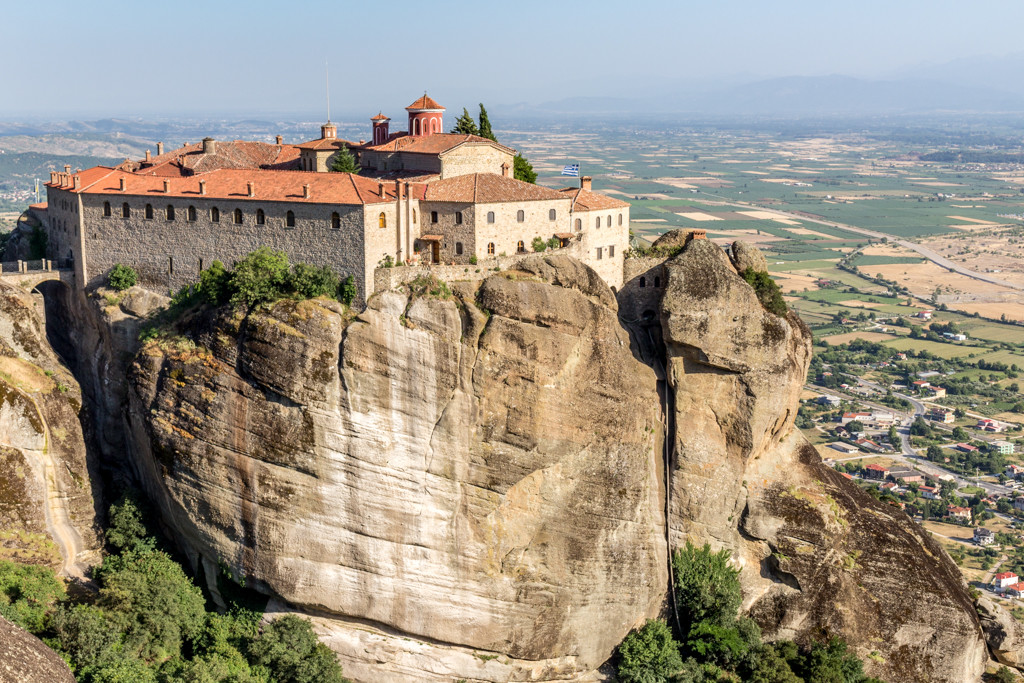
Perched precariously atop sandstone pillars, some as tall as 400 meters, you’ll find ornate and awe-inspiring monasteries that have remained for centuries to become a holy place revered by Christians all over the world (and a UNESCO World Heritage Site). Meteora is actually the name for the geographical region where these monasteries are found; the nearest city is Kalambaka.
The name Meteora is of Classical Greek origin and means “things up in the air,” “lifted up,” or “hovering;” quite appropriate for these massive rocks that tower overhead in a way that I’ve never seen in my life and am fairly certain I’ll never see again elsewhere.
The rock formations of Meteora, sometimes referred to as a ‘rock forest,’ took my breath away right from the start; our lodging at Alsos Guesthouse put us in a prime position to admire the giants from below. This guesthouse, situated outside of the city center but nestled right at the base of some behemoth rocks, made for a nice compromise. Though the walk to town was a bit of a trek in the heat of the summer, I certainly didn’t mind waking up to this view.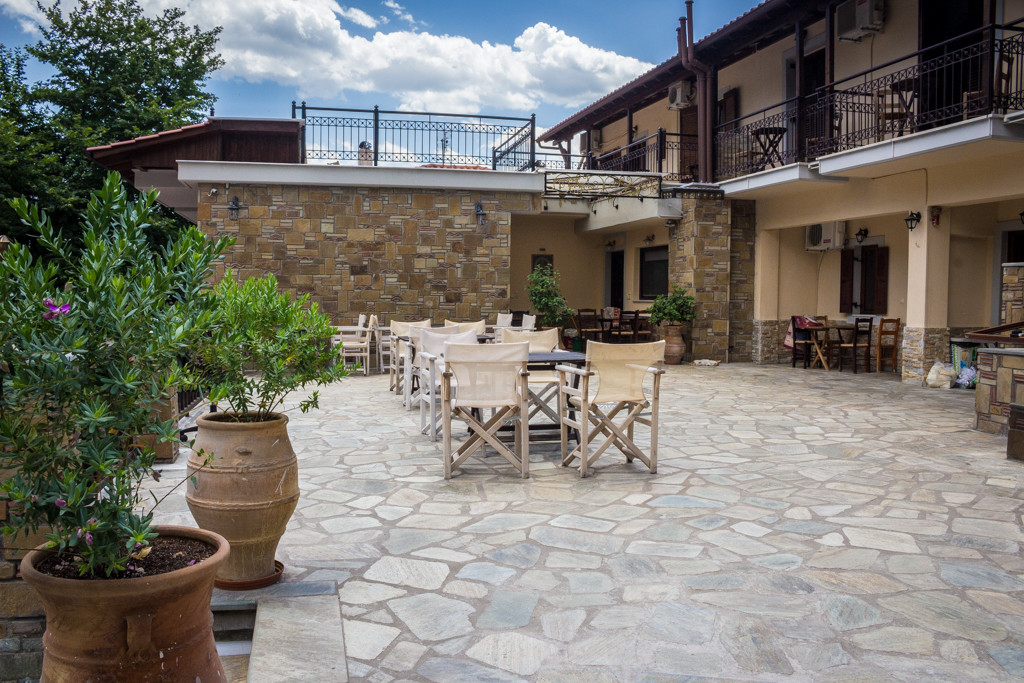
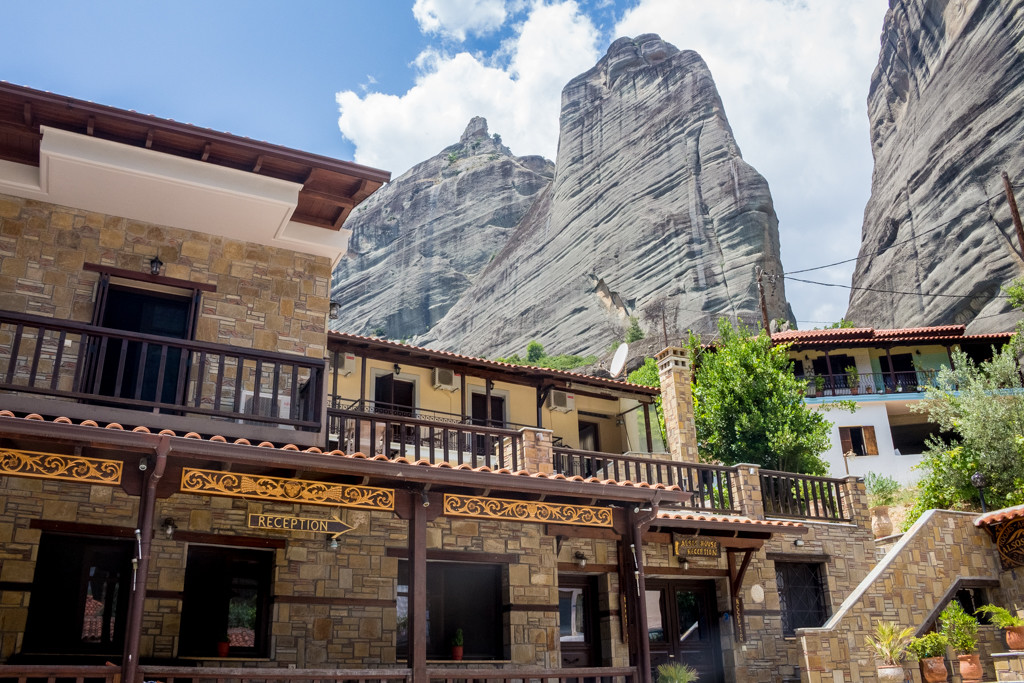
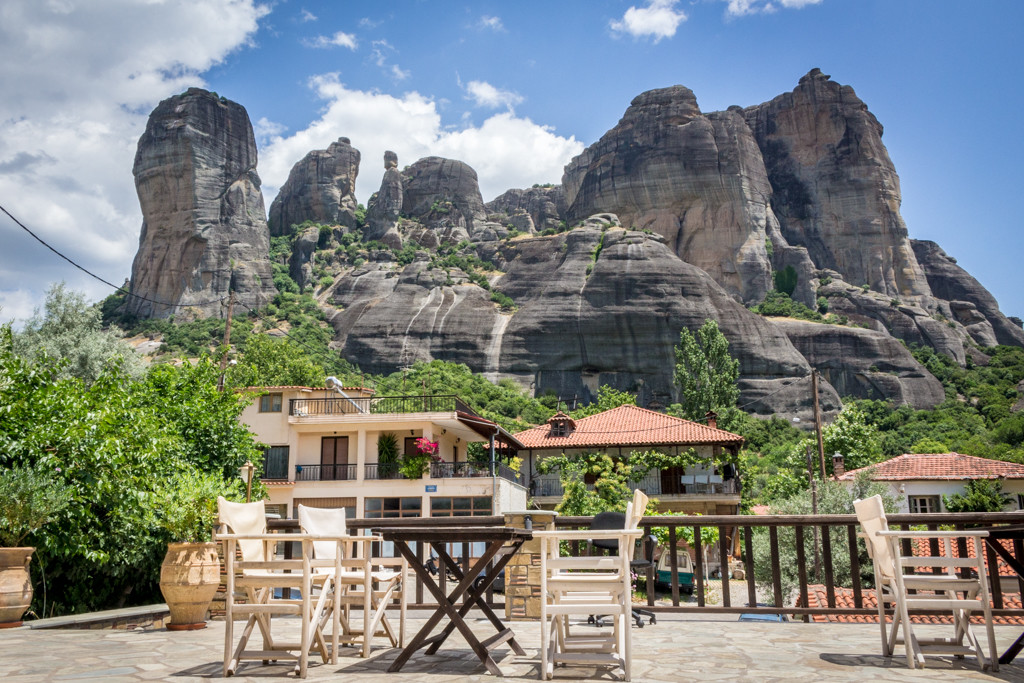
Not only was the guesthouse in a prime viewing position, but it was also located right at the base of a hiking trail that would bring us to a formation known as The Holy Trinity where we would then be able to access two of the few monasteries still in use (6 are currently open to the public while a few others are reserved for private use by the monks, though it is estimated that there were originally as many as 24). 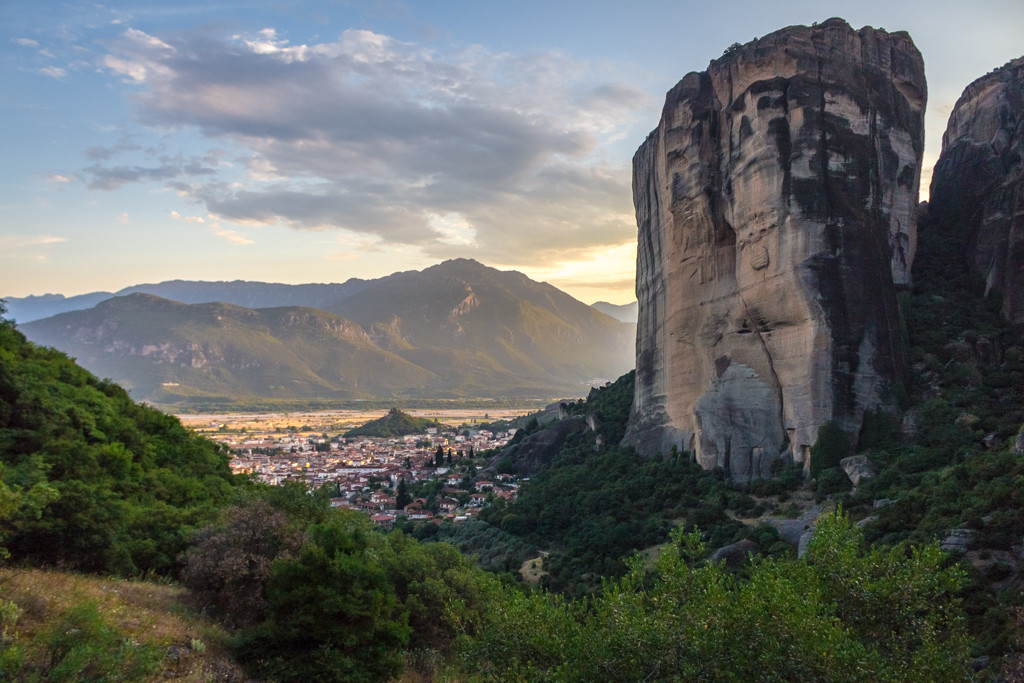
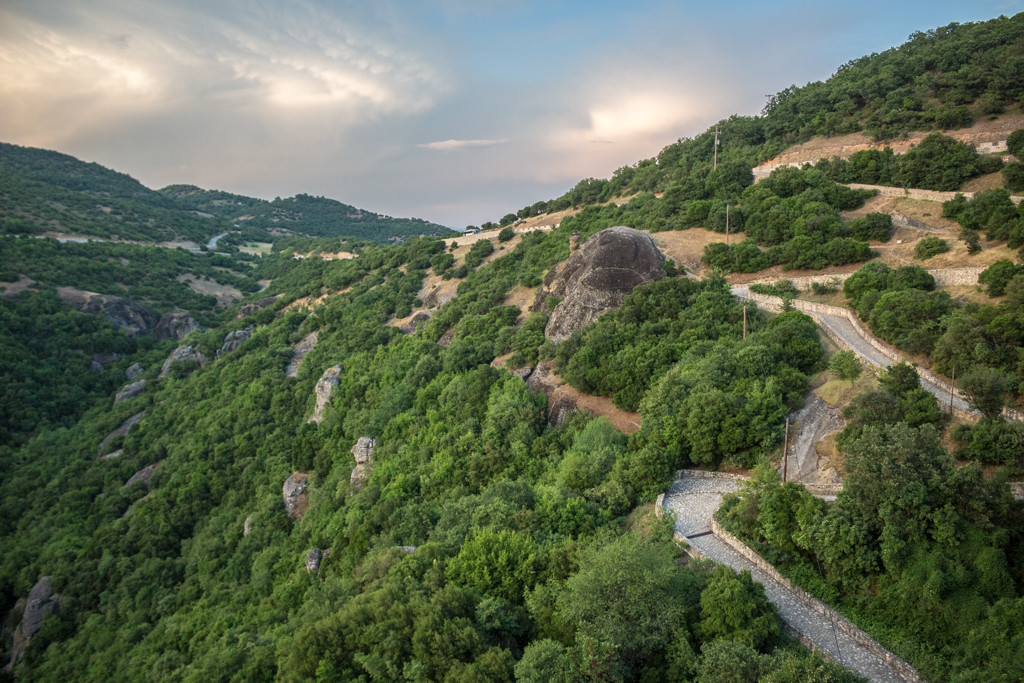
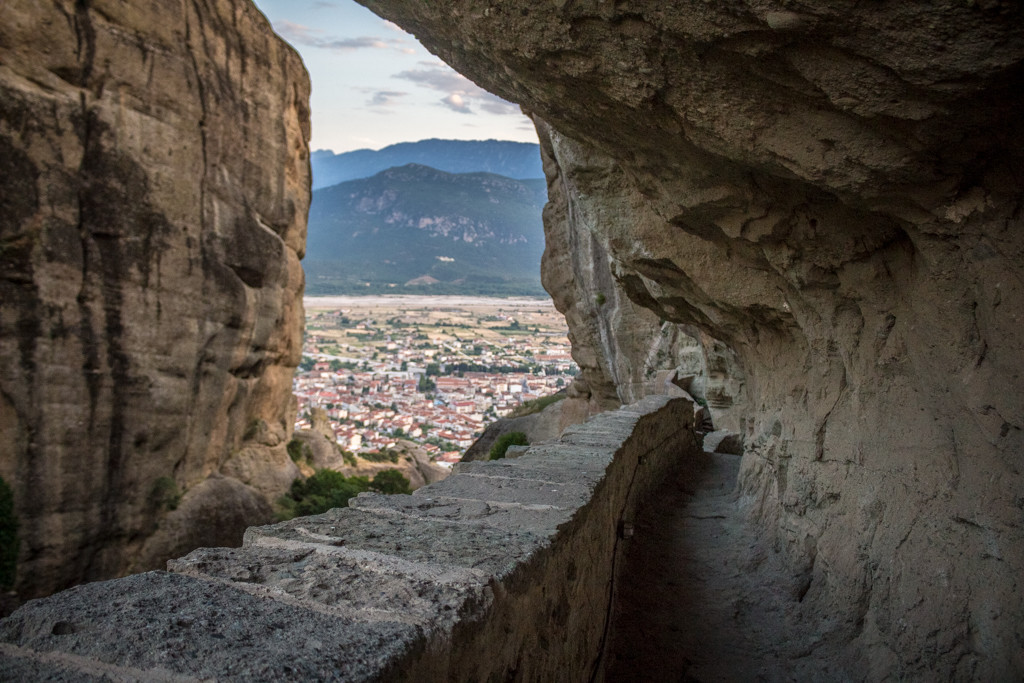
Though we didn’t make it up to the top early enough to catch opening hours, we got something perhaps even more special–our very first incredible Meteora sunset. 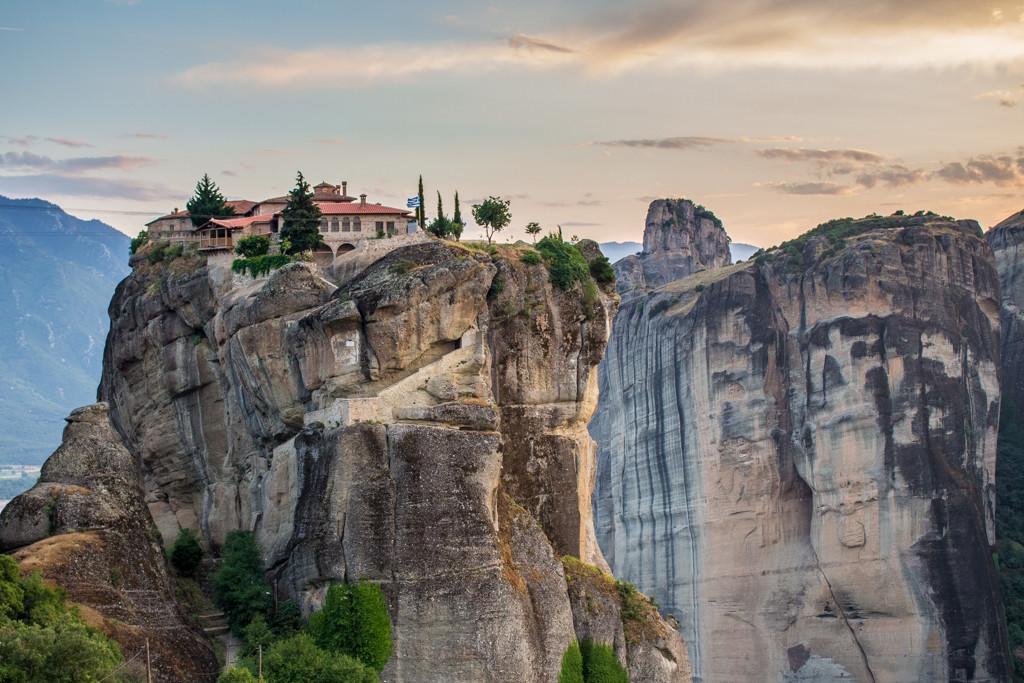
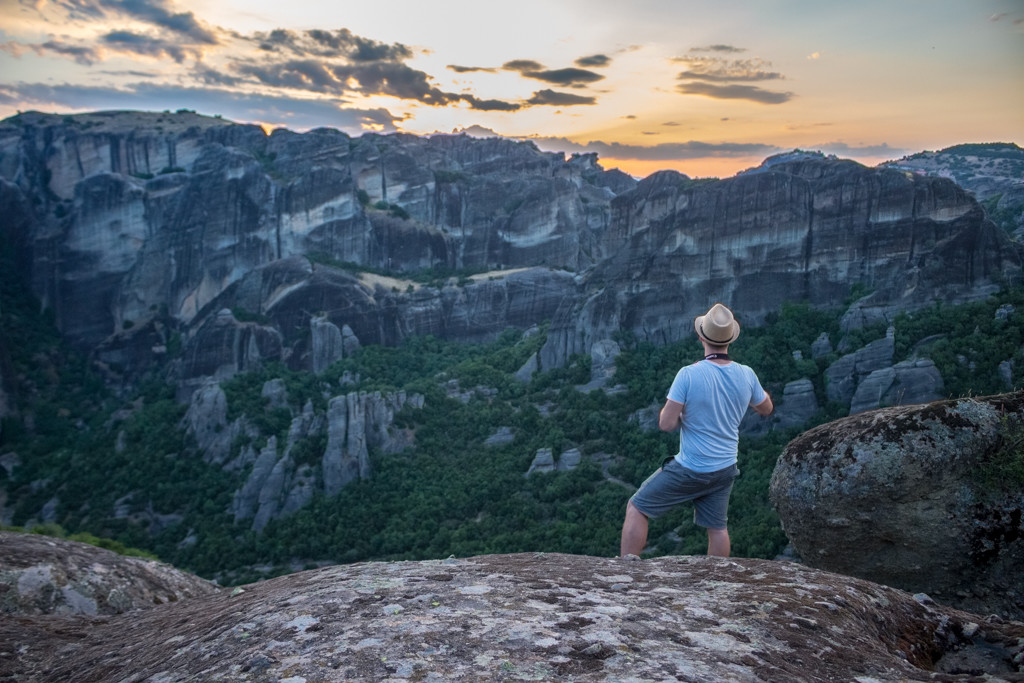
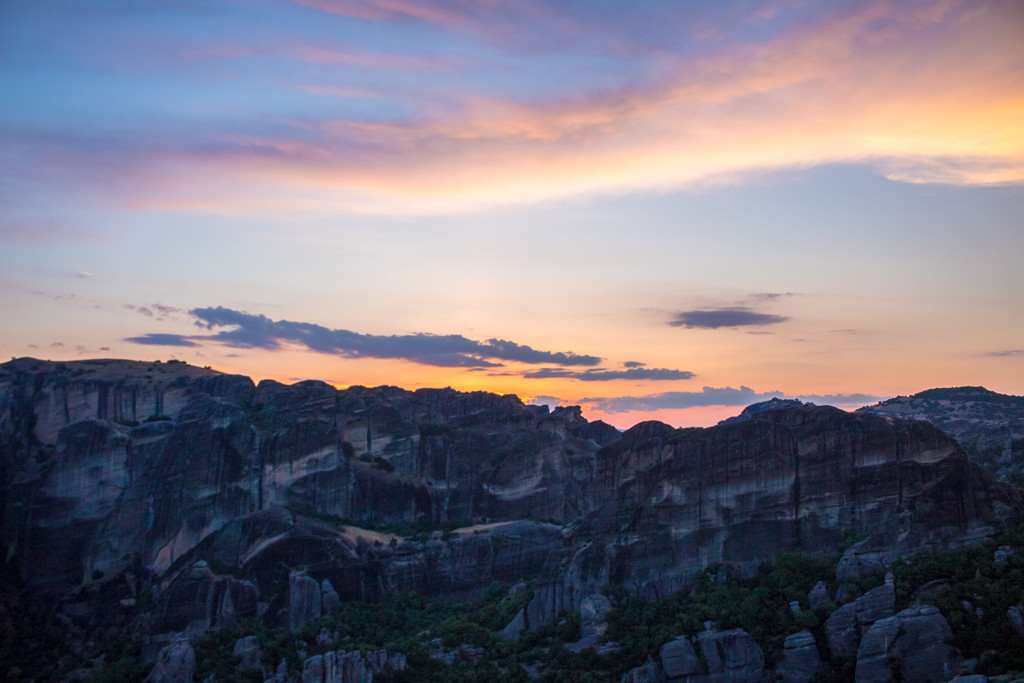
The following day, we embarked on our first of two Meteora tours, a hiking tour that would include a visit to the oldest and largest of the monasteries, the Great Meteoron Monastery. We piled into a minivan with a group of 10 others and made our way to the start of the hike. The system of foot trails winding in and out of the rock forest is extensive and one could, hypothetically, do a similar tour without a guide, but I always prefer to go with an expert who can regale me with fascinating historical tales and tidbits. 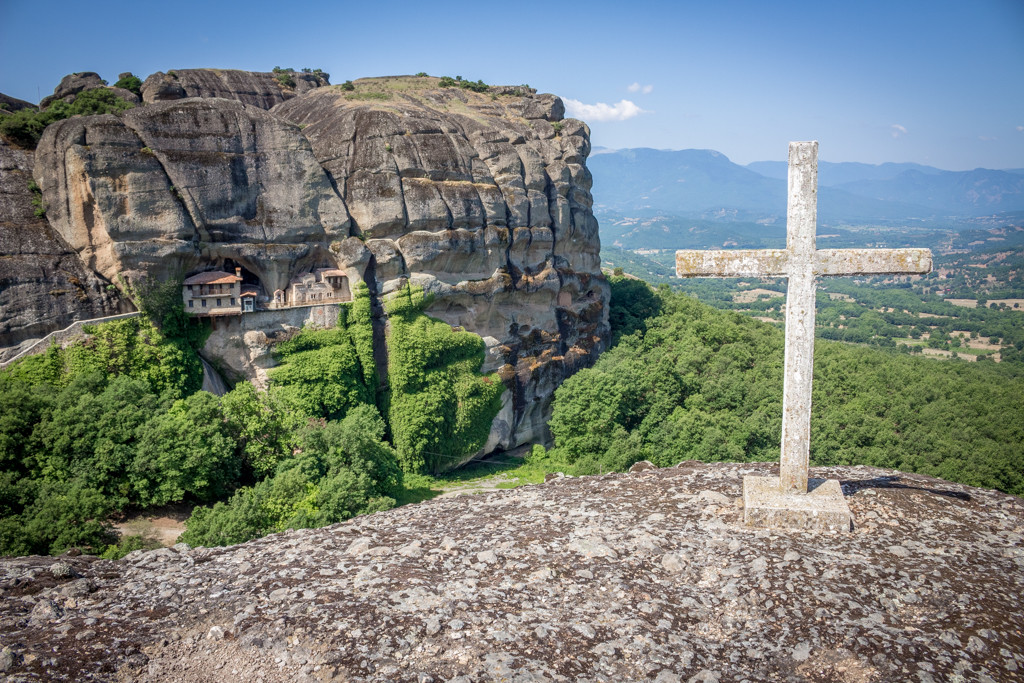
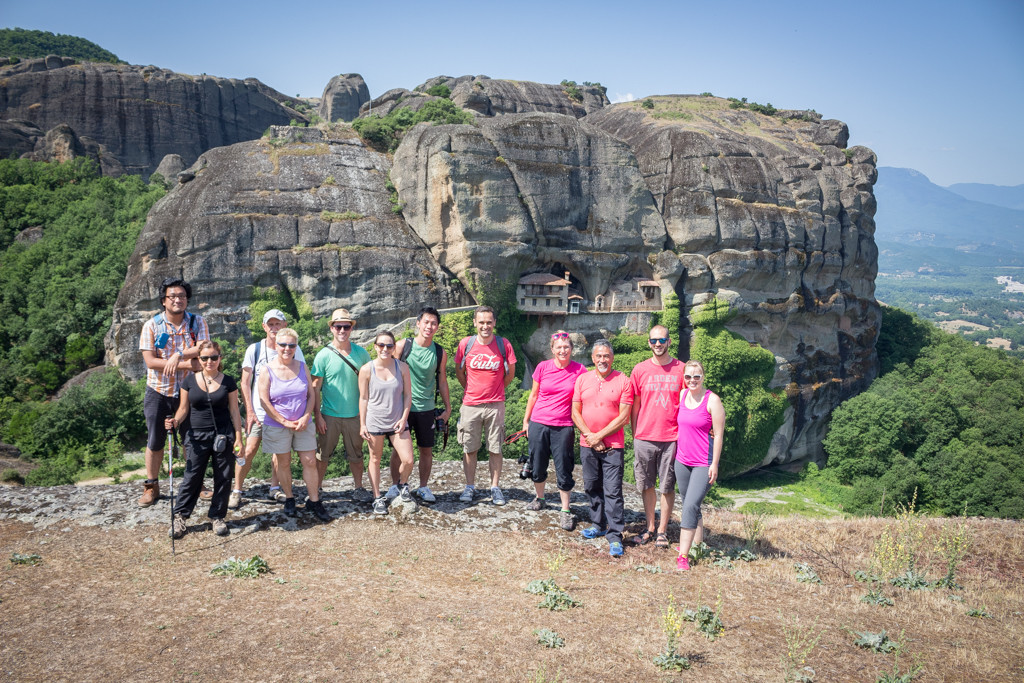
And our guide was incredibly thorough, leaving no stone unturned (ha, ha). Naturally, the first thing we all wanted to know was, “How in the FRESH hell did those monasteries get up there?!”
Well, the short story is that in the 9th century, a number of hermetic monks came together in the region but continued living in solitude, only congregating on Sundays for worship. For many centuries, they lived in small hermitages built into caves and fissures. Oh, and to scale these sandstone pillars in the first place? In true badass fashion, they rock climbed, of course. What better place for hermits to live than a place inaccessible to pretty much anyone with a will to live?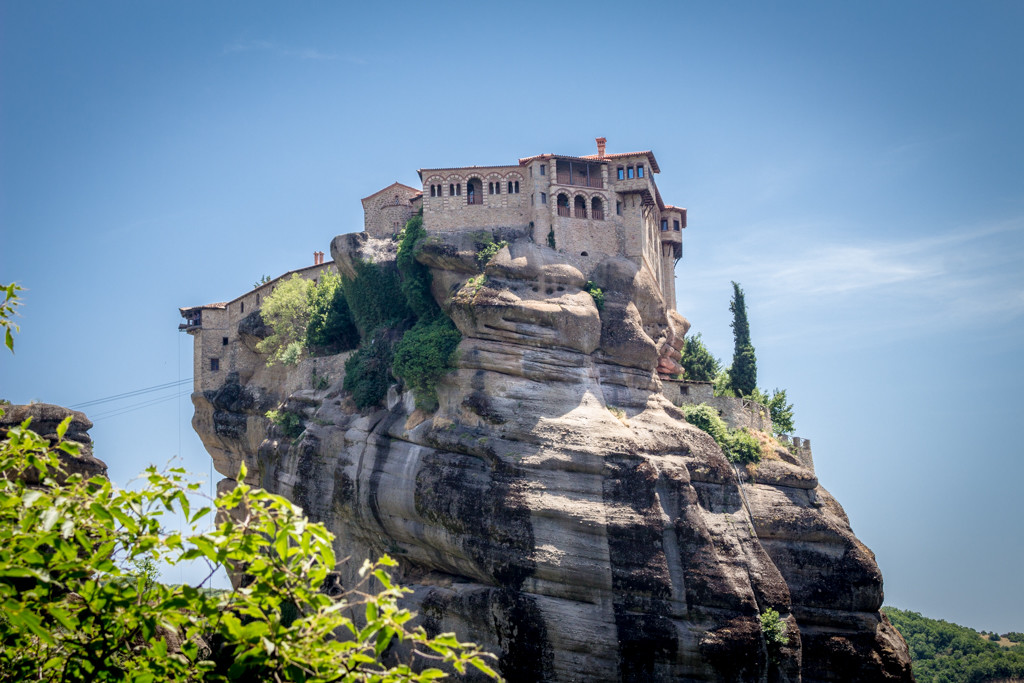
The question that kept popping into my mind was, “How many of these monks died trying to reach the top?” But my question went unanswered; they have no way of knowing this, I suppose, but it’s something I will forever wonder.
As more and more monks congregated in the region, a rudimentary monastic state was formed, and it is estimated that the first monasteries were built in the 14th century using a system of ladders, pulleys, nets and baskets to haul materials up the sheer rock cliffs. The construction of each monastery took many, many years and a whole lot of determination. Many considered it their life’s work to help build a monastery, even if they wouldn’t live long enough to see it completed.
As we continued our hike, we saw the monasteries from a number if different vantage points while our guide continued on with detailed history lessons. We admired monasteries built into the sides of cliffs, vast stretches of green to the west, statues and other monuments, and even rock climbing routes. As you might imagine, the region is now quite popular among rock climbing enthusiasts–except unlike the monks, they no longer free climb. 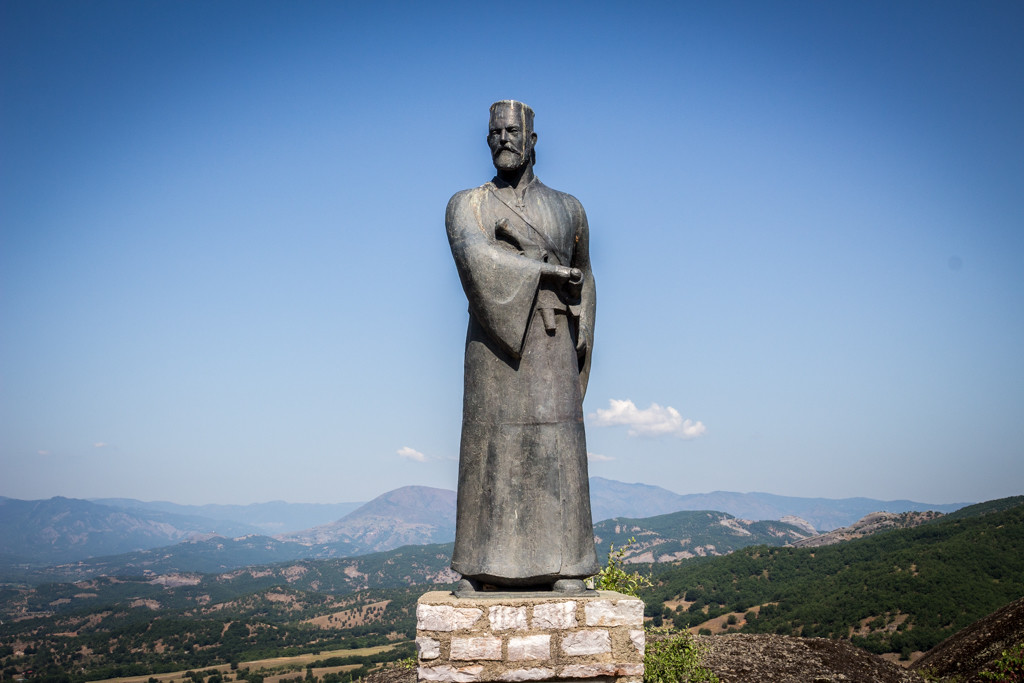
Finally, we visited the monastery itself. The cost of entry is 3 euros, which seemed quite reasonable. An hour was plenty of time to take in the important parts like the museum and the church, and to admire the view from the top. 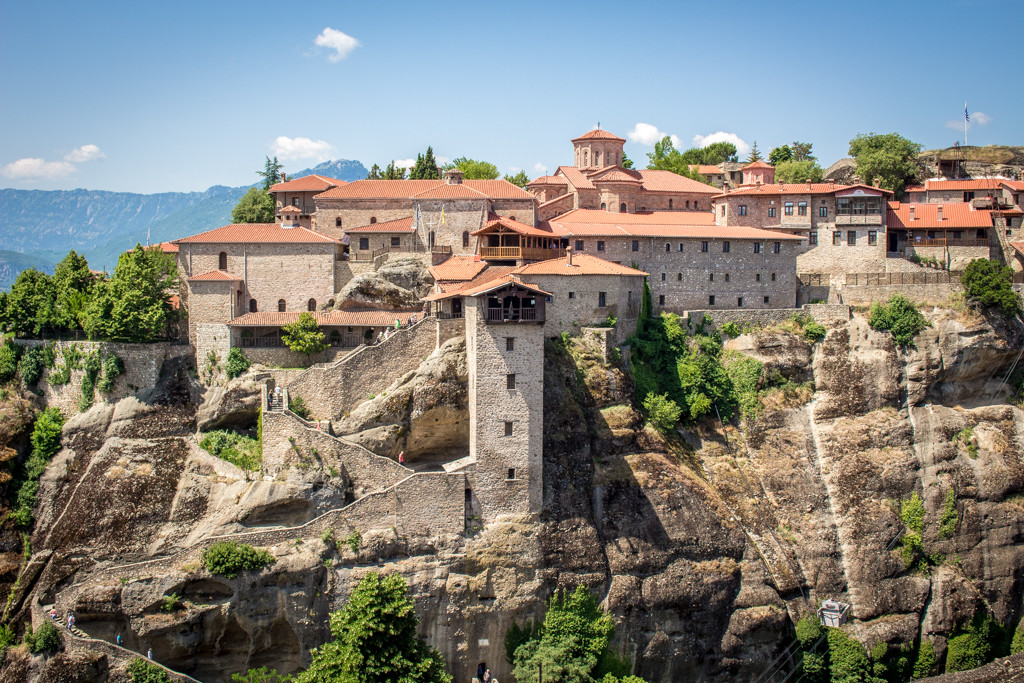
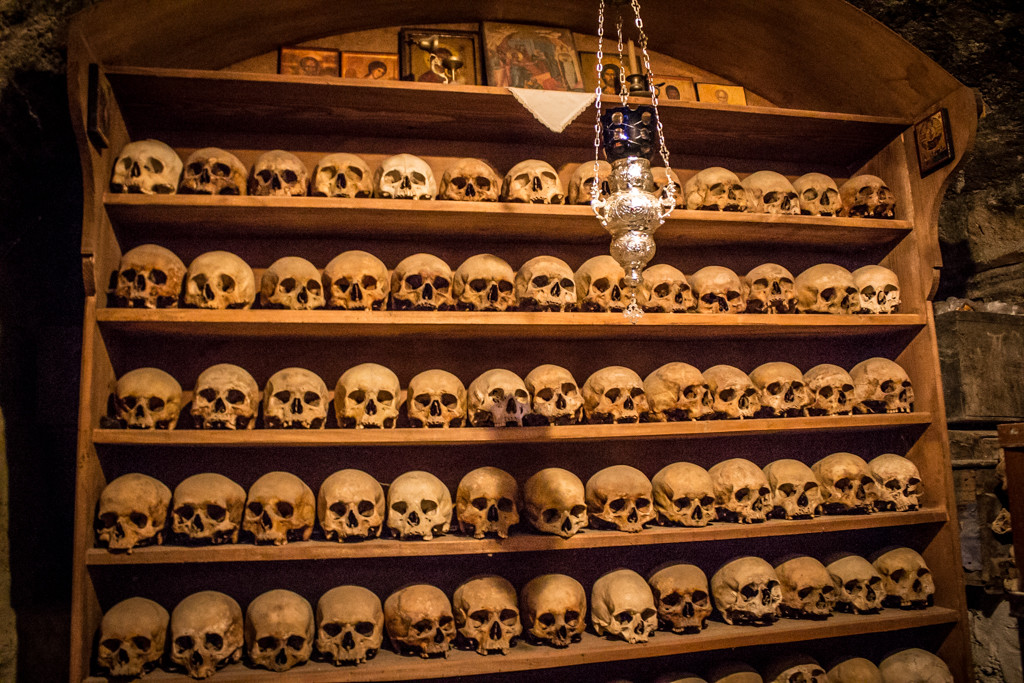
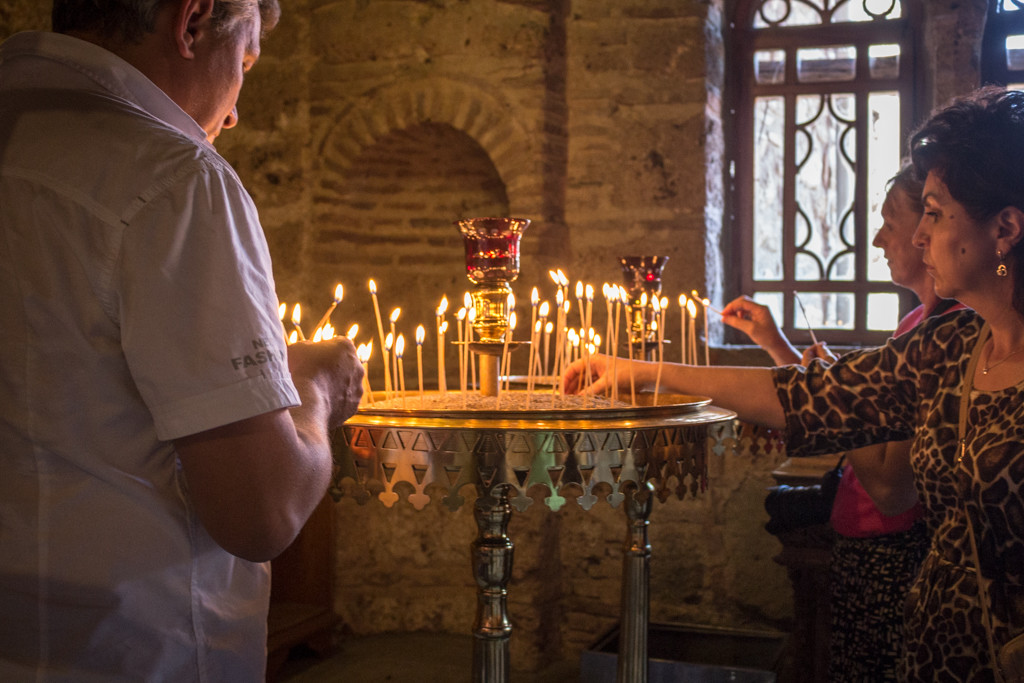
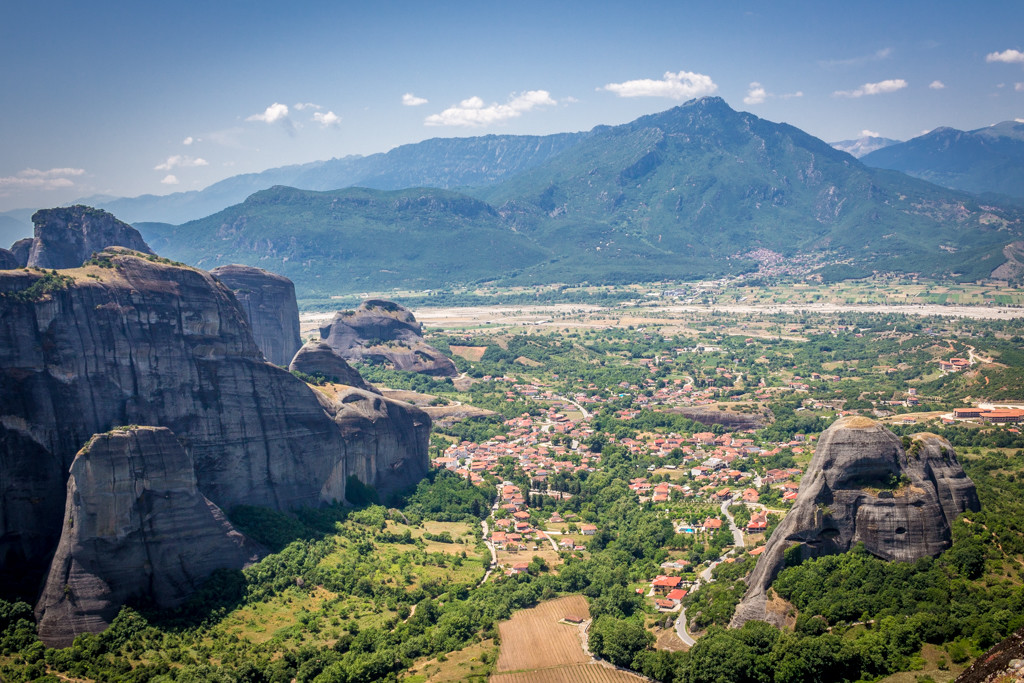
Our hiking tour of Meteora ended just after midday, the perfect time to grab lunch at one of the many traditional restaurants in the center of Kalambaka.
The next tour we had planned was the one I was most excited about–the sunset tour. This tour was a rather long one, beginning with a 5pm pickup and ending at 9pm, but it was summer after all, so the sun would be setting pretty late in the evening. Although much of the information on this tour was identical to the tour the previous day, the route we took was entirely different.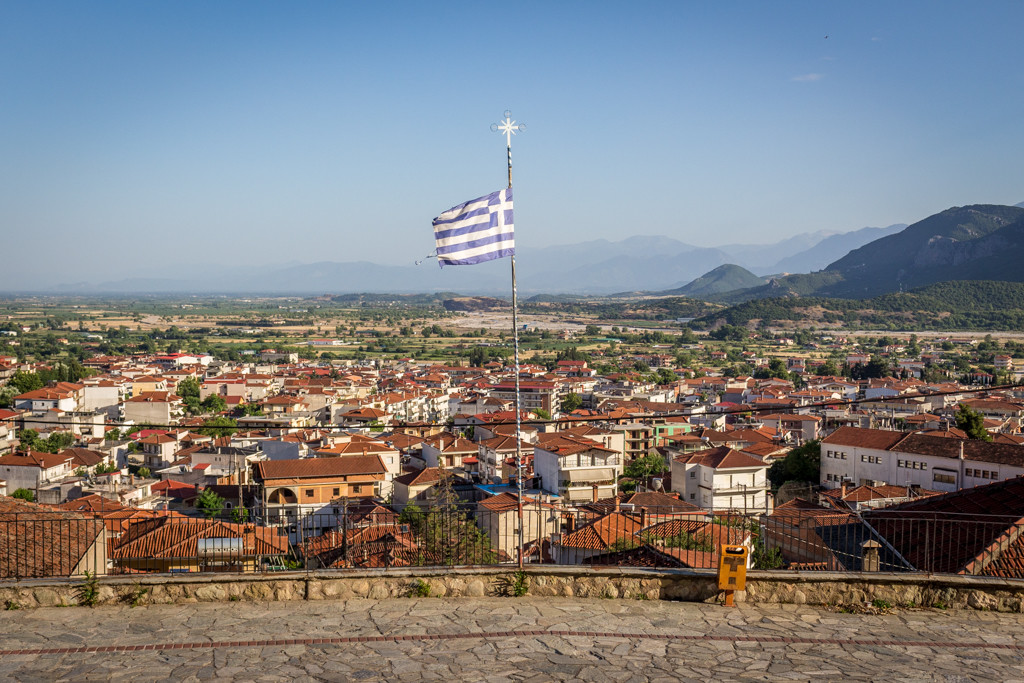
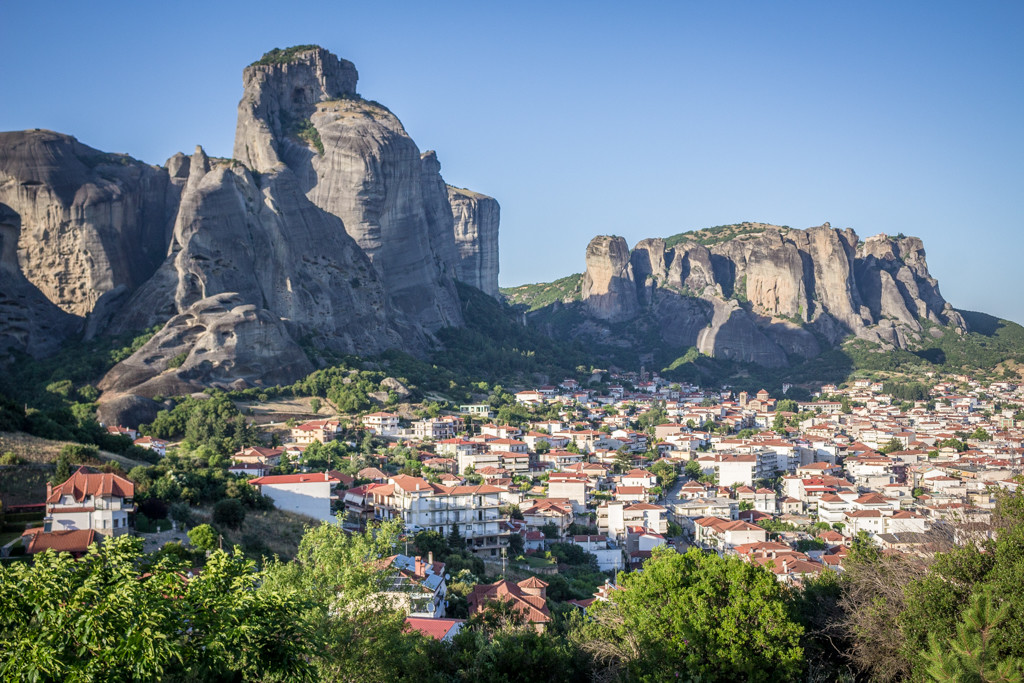
And this time, rather than hiking, we remained in the van most of the time, stopping at various points for photos and to visit another monastery, this time a much smaller one (but still with great views), the St. Nikolaos Anapafsas Monastery.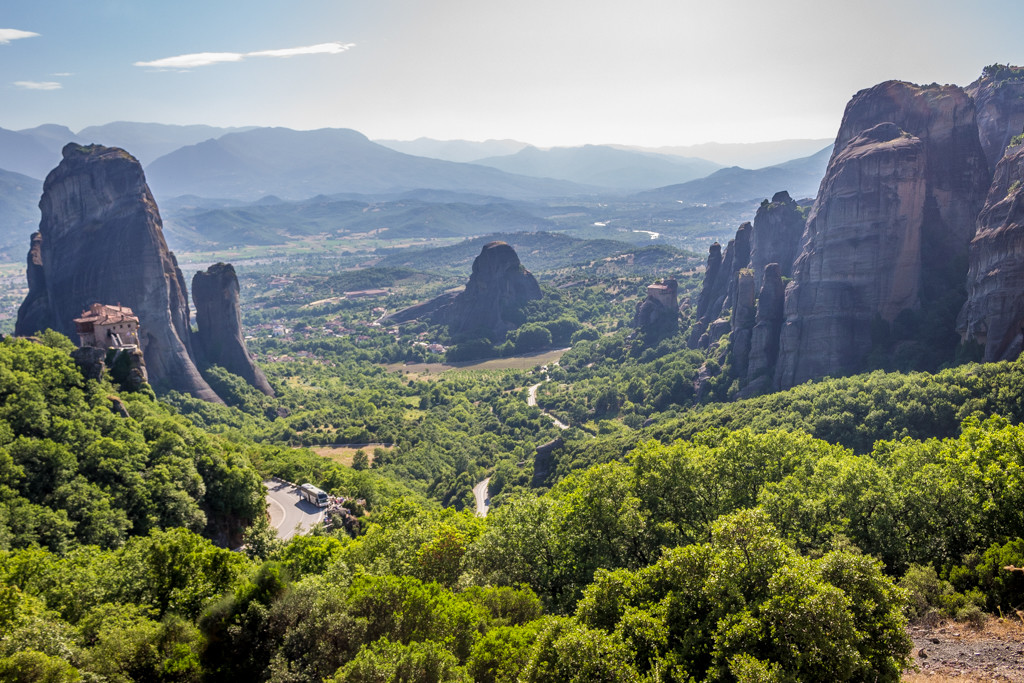
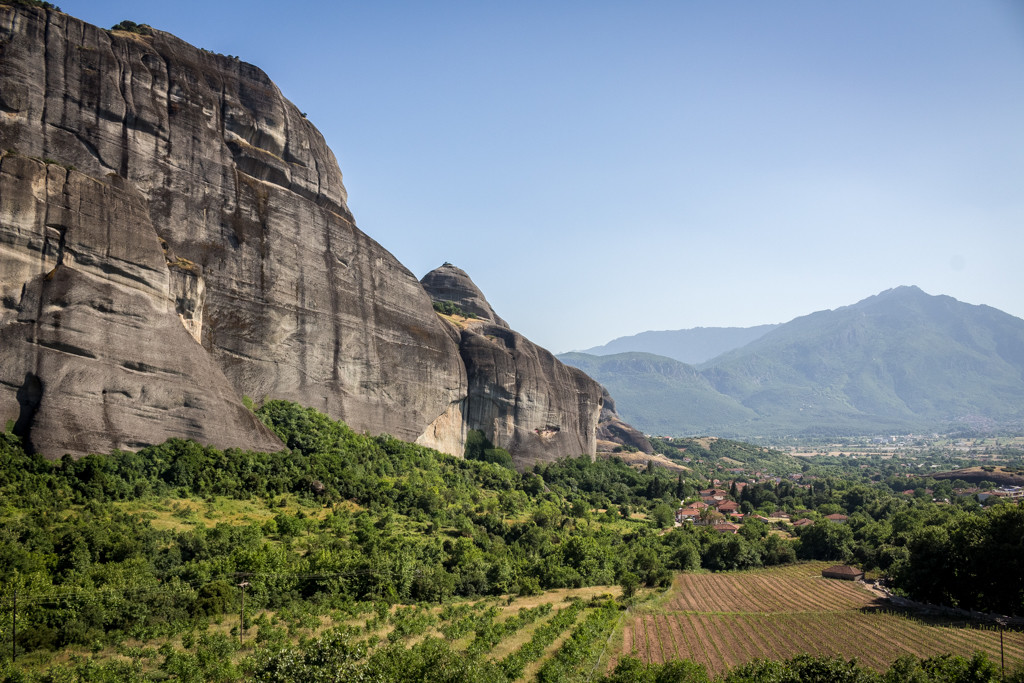
Finally, we made our way to our last stop for the grand finale. At this point, I’m going to let the photos do the talking for me.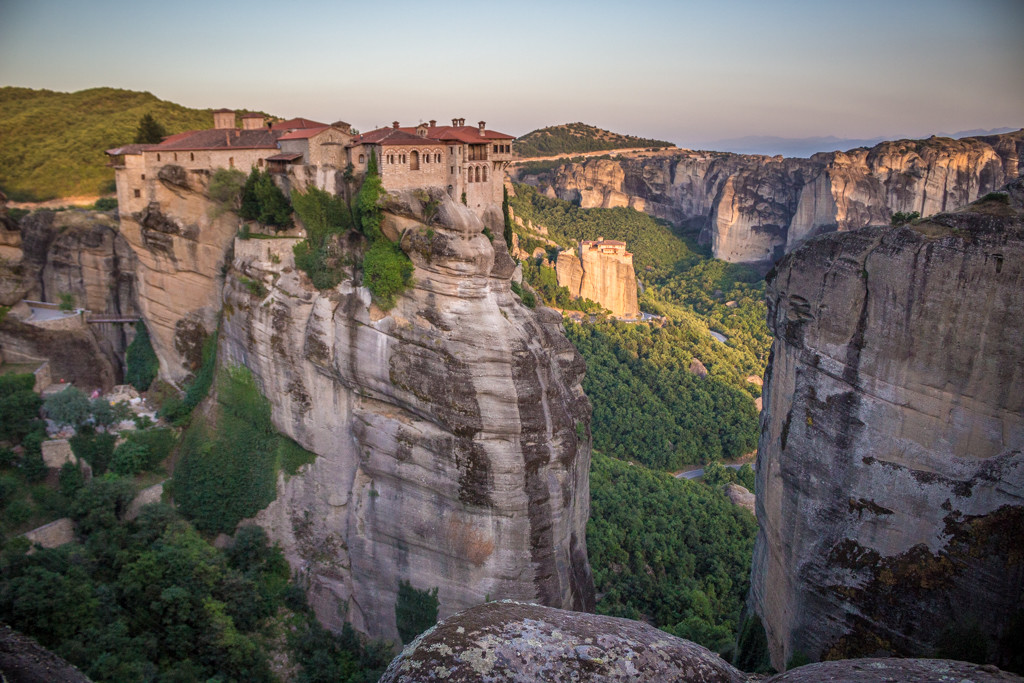
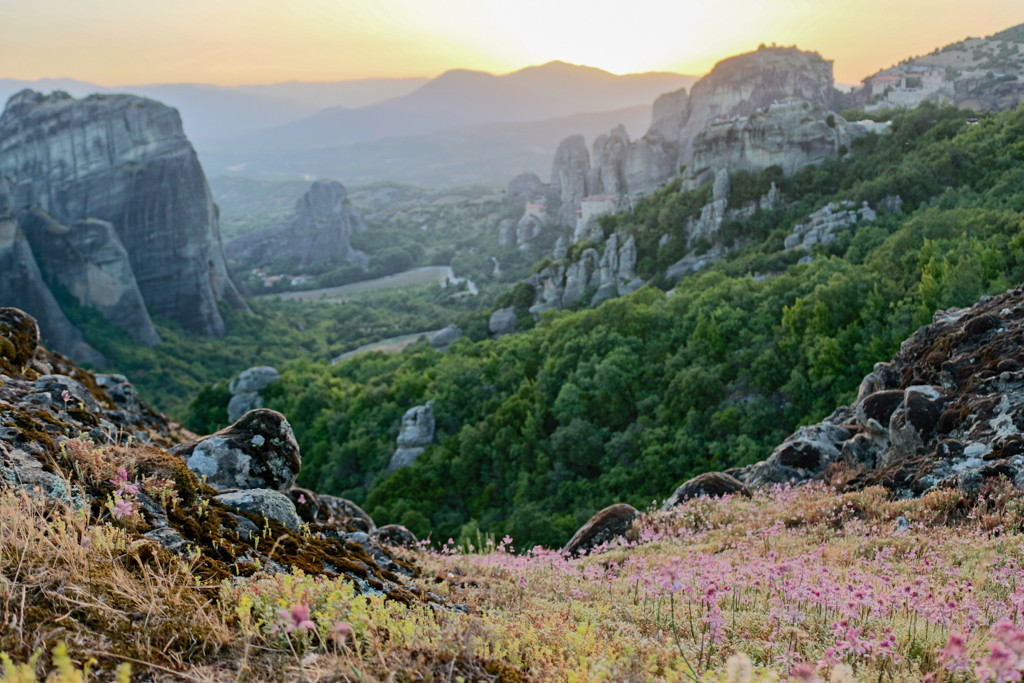
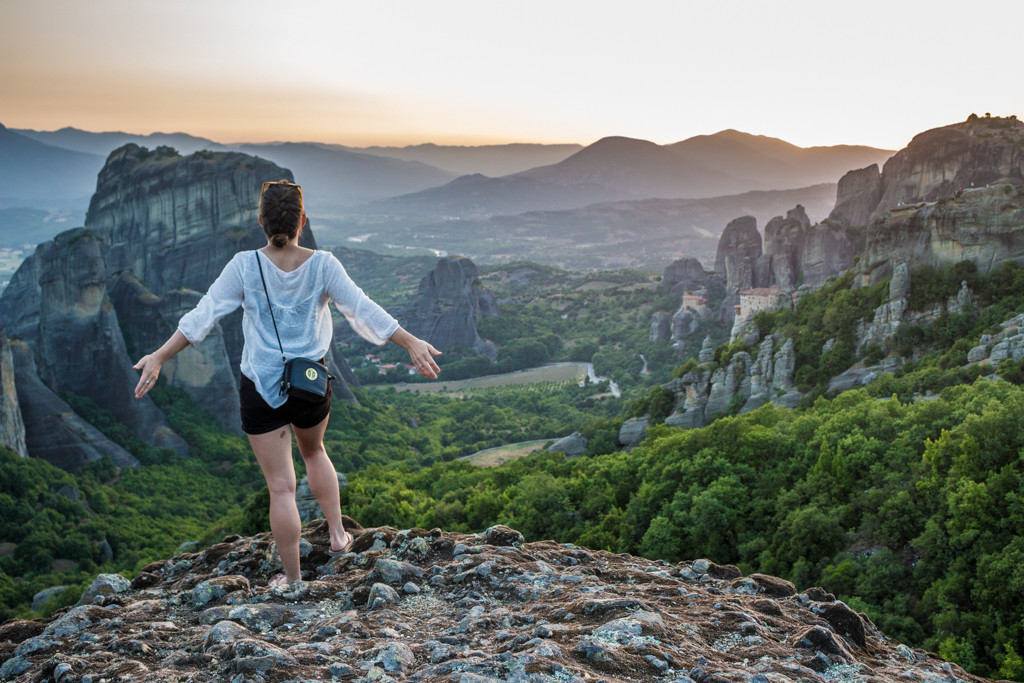
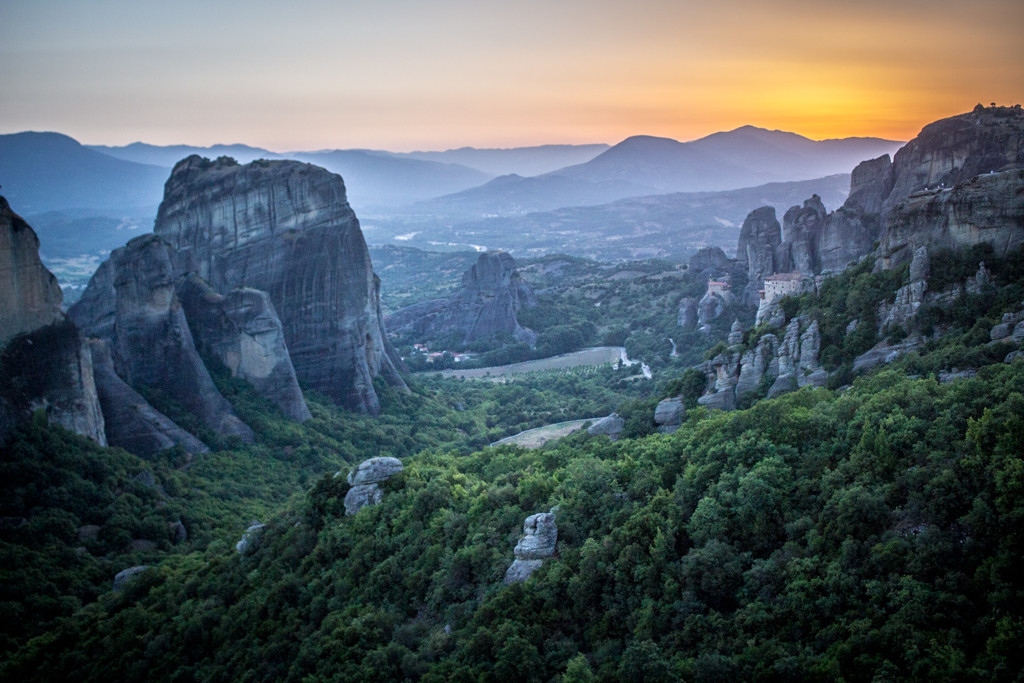
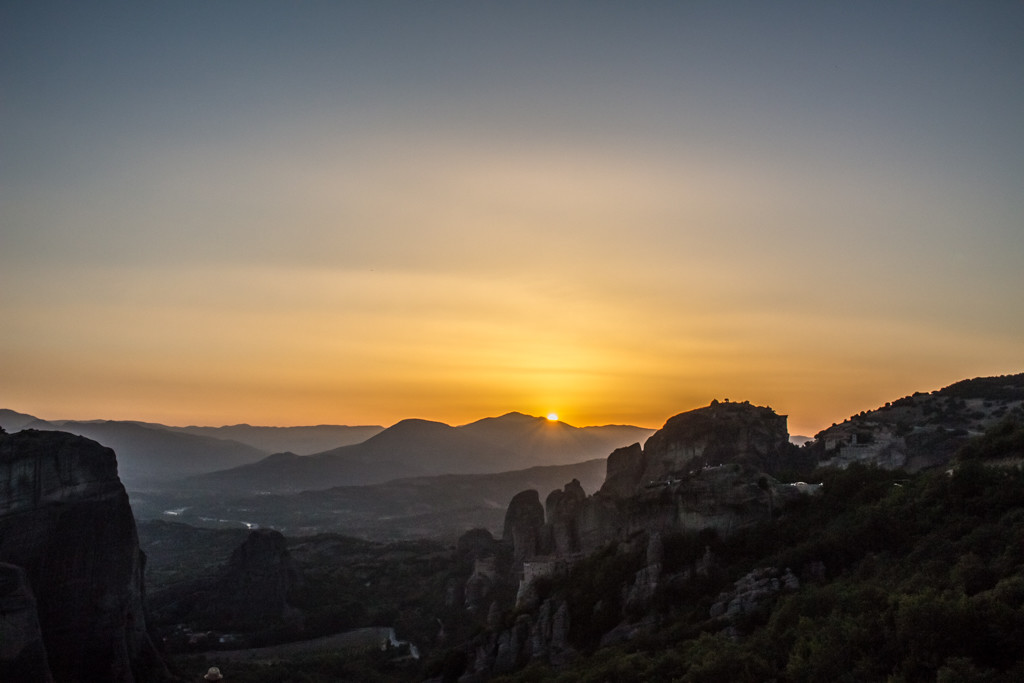
Needless to say, I was beyond pleased with how our time in Meteora was spent. I loved the different ways in which we got to experience the monasteries–doing two tours at different times of day, visiting more than one monastery, and exploring them both from the ground and from above felt like it gave us a really comprehensive understanding of the place and its history.
But, if you’re short on time and can only realistically do one tour, I’d highly recommend the sunset tour. A sunset tour of Meteora truly is otherwordly, and an experience you’ll surely remember for the rest of your life.
Pin It!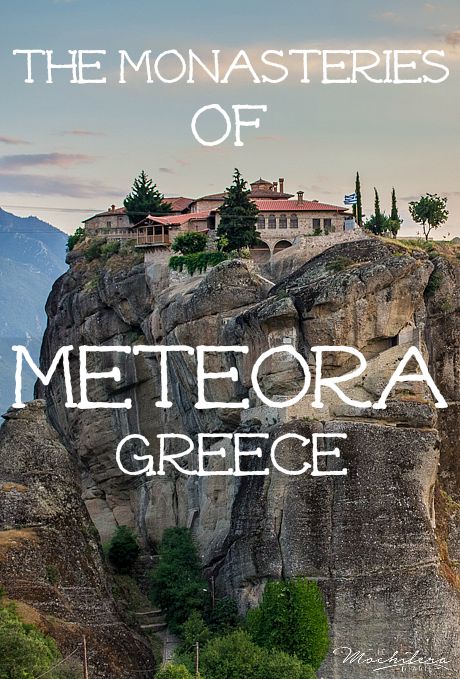
Many, many thanks to Visit Meteora for showing us such kind hospitality during our visit. As always, all opinions expressed in this article are my own.

